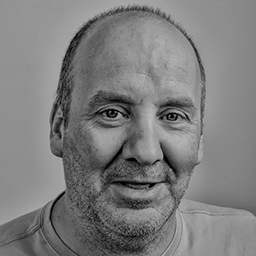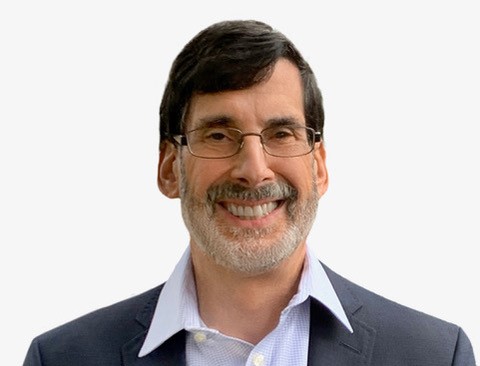BY MICHAEL KIRSCH
We’ve all heard the adage, leave it to the professionals. It’s typically used when an individual has wandered out of his lane. How many folks go beyond their knowledge and skills with home projects, for example, who must then hire a real professional to mop up the mistakes? Luckily for me, the only tools that I – a gastroenterologist – know how to use are a colonoscope and an endoscope, so there’s no chance that I will be tempted to perform any plumbing or electrical tasks at home.
Although patients are not medical professionals, they routinely bring me results of their own medical research which suggest possible diagnoses and treatments. Often, these are patients whom I am meeting for the first time. I applaud patients who strive to be informed participants in their care. Indeed, there have been instances when a patient has brought me a valuable suggestion that I had not considered. But these are uncommon occurrences. A few computer clicks by a patient is not equivalent to the judgment and experience of a seasoned medical professional. It’s unlikely, for example, that I will agree that a patient’s elevated temperature is caused by malaria, despite this appearing on a patient’s internet search on the causes of fever.
However, even when I feel that a patient’s research results have no medical merit, the ensuing conversation is always valuable for both of us. I am in the room and can address the issue directly in real-time. I am the patient’s guardrail to protect him from careening off the road. I can explain right then the importance of being guided whenever possible by sound medical evidence. So, while I truly welcome the dialogue and recommendations from patients, I think that the maxim leave it to the professionals applies. Isn’t this why patients come to see us?
There’s a new player on the scene masquerading as medical professionals dispensing medical advice to the public. And in this case, there are no effective protective guardrails protecting patients as we doctors routinely do. I am not referring to middle of the night telemarketers or companies promising that probiotics are the panacea of our time.
As absurd as this sounds, politicians are now authorizing medical treatment for various diseases and conditions. Politicians? Could this be true?
Politicians in my state of Ohio and elsewhere are authorizing medical marijuana use for a growing list of medical diseases and conditions. And additions to this list are anticipated.
When politicians essentially practice medicine without a license, there are no effective restraining or corrective forces to protect patients from unproven therapies. In Ohio, elected legislatures – not medical professionals or the Food and Drug Administration (FDA) – have authorized medical marijuana for 25 medical conditions, as crazy as this sounds. Would it make sense for elected officials to offer bills on which drugs to use to treat diabetes, heart disease or depression? (Hint: It wouldn’t.)
Not only are elected officials unqualified to render medical opinions, but their views and votes are surely be tainted by political considerations. This is the nature of their occupation; it’s what they do. If a pharmaceutical company, for example, is in a politician’s district, might this influence the politician’s support of a bill that favors the company’s interest? (Hint: It would.) We accept this as an example of legislative sausage-making. But we should not accept a legislative bill that authorizes treatment for medical diseases. This circumvents established testing processes that have been in place for decades that ensure that pharmaceuticals are safe and effective.
It is true that Ohio patients seeking medical marijuana do need to see a participating physician to be granted a medical marijuana card in order to purchase marijuana at a dispensary. However, no formal medical prescription is required. From what I’ve learned from my own patients is that these doctor visits are pro forma transactional meetings. These appointments are not opportunities for candid risk-benefit analyses of medical marijuana, as physicians routinely occurs in our offices every day when we recommend treatments or tests. I surmise that patients seeking medical marijuana cards are nearly always granted them. The system operates more like a turnstile than a guardrail.
It is shocking how Ohio elected officials have commandeered the legalization and expansion of medical marijuana for our citizens in the absence of the rigorous scientific vetting and oversight that we demand and deserve for pharmaceuticals and medical devices. Every medication that I prescribe has gone through years of strict scrutiny by the FDA before being granted approval. Just because the public has an appetite for medical marijuana, and that there are business interests at play, are not sufficient to abandon established testing protocols to verify marijuana’s safety and efficacy with respect to specific diseases. I do not know a single prescription medicine that has been approved for as many diseases as medical marijuana has been authorized for. Most medicines are approved for 1 or 2 specific indications, not a smorgasbord of illnesses.
In Ohio, medical marijuana has been legal since 2016. The state legislature has recently added 4 conditions to the list. Since this was all a political creation, the quality of medical evidence supporting marijuana’s efficacy for nearly all of the illnesses on the list is absent or low. Trust me, if the FDA’s established standards of safety and efficacy were applied, the list might be reduced to zero. (Medical research on marijuana has been difficult since marijuana is a Schedule 1 controlled drug and is an illegal substance under federal law. However, a recent federal law was passed that should ease the research process.)
But wait, there’s more. The Ohio Senate passed a bill in the last legislative session that would permit marijuana use to any individual who can “reasonably be expected to benefit” from its use. Can we agree that this designation is absurdly broad and could be applied to any and all medical conditions on the planet? As the bill was not passed in the Ohio House, the bill died, but a resurrection is anticipated.
I realize that many readers may disagree with me. They may have personal experiences supporting medical marijuana use. And for many of the marijuana-eligible ailments – Alzheimer’s disease, PTSD, ALS, fibromyalgia, cancer, Parkinson’s disease and others – conventional treatments are often inadequate. So, of course, I understand the appeal of medical marijuana or any promised remedy to these suffering patients and their families. But I also believe that standard safety procedures should be followed as are done with all medications and medical devices. One must wonder why there hasn’t been a demand for high quality clinical trials to ascertain safety, efficacy and dosing? Shouldn’t the medical marijuana industry want this? Don’t patients deserve this?
Clearly, there are economic and political benefits from the medical marijuana industry which are fueling its development and growth. This has exposed a huge conflict of interest between economic and political health versus public health. I’ll assume readers know which side I favor.
This essay opened with the saying, leave it to the professionals. In the case of medical marijuana use in Ohio, the professionals have largely been left out. And so has the public. Who is advocating for them?
Michael Kirsch, MD writes medical commentary at MDWhistleblower.blogspot.com. Readers are welcome. He practices gastroenterology at the Cleveland Clinic Foundation (CCF). The views expressed here are his personal opinions and do not represent the views of CCF.






Leave A Comment